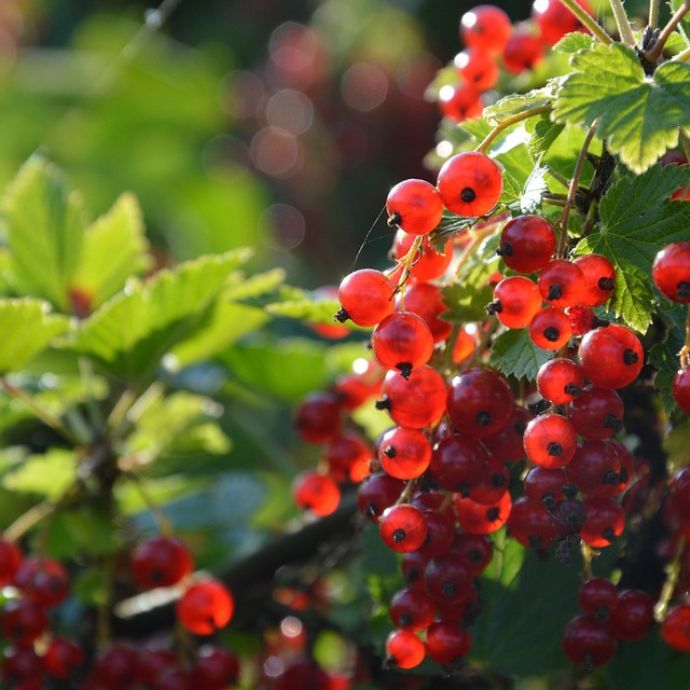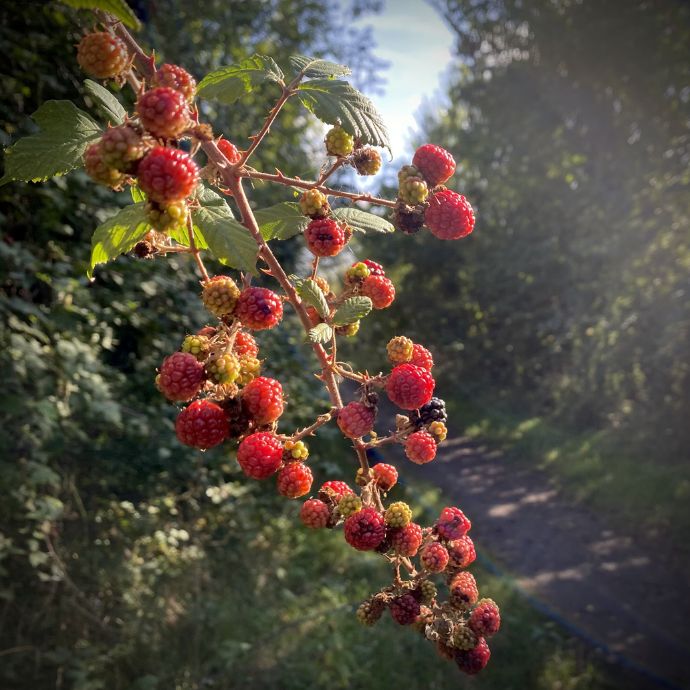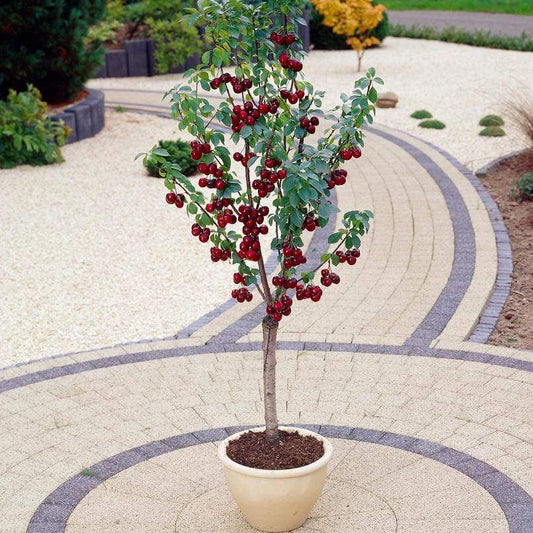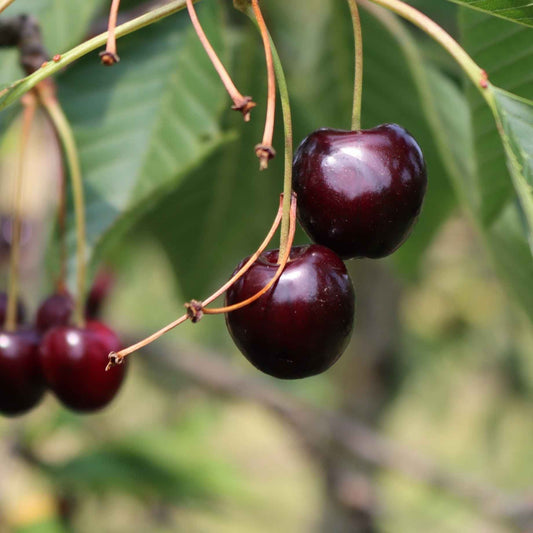Pruning Cherry Trees: Fruiting and Flowering
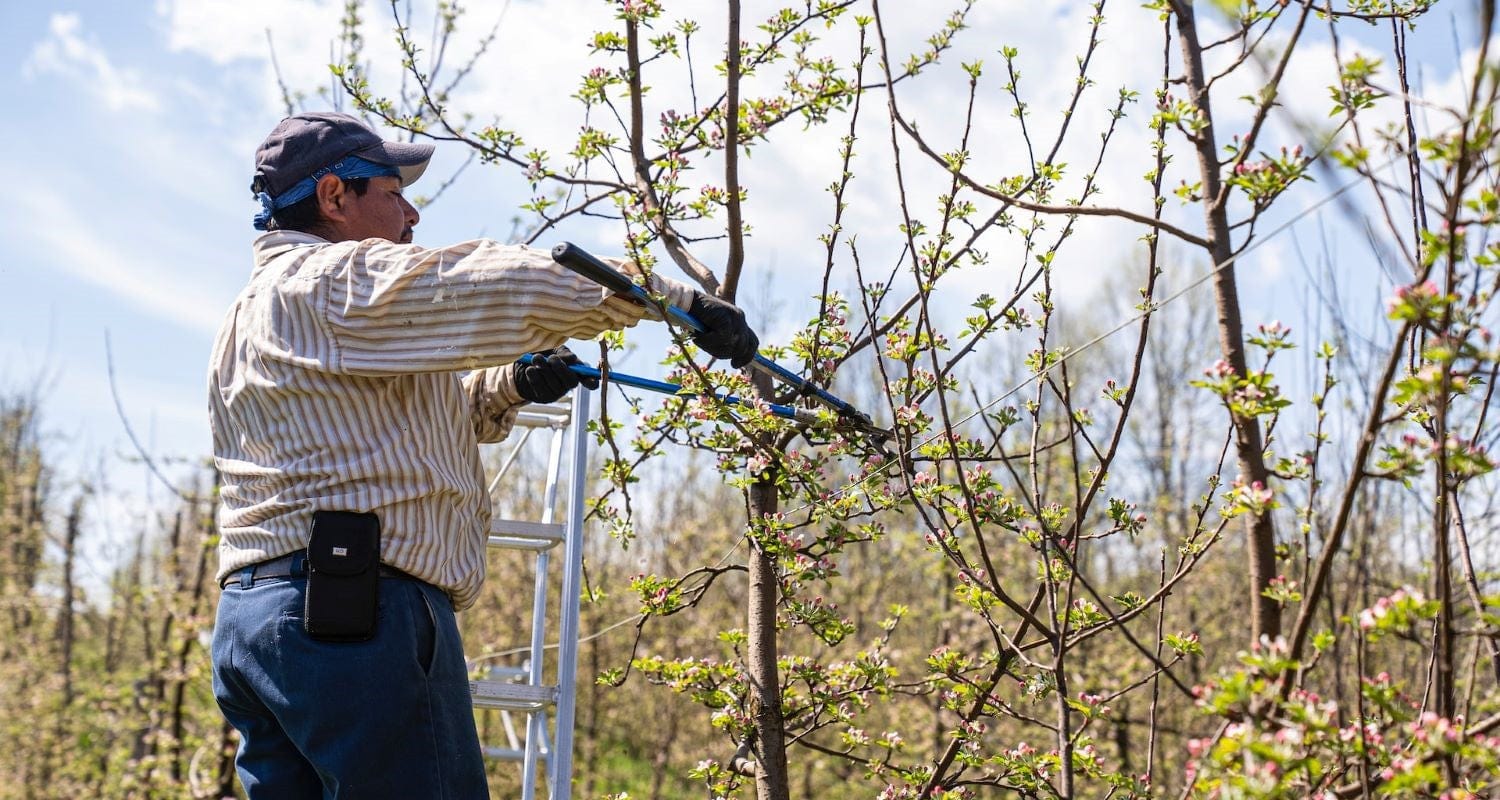
If you have a cherry tree, it can be confusing trying to figure out when and how to prune it, as each type - flowering cherries and fruiting cherries (including sweet and acid types) - needs a slightly different approach. However, the benefits to your tree’s health, including more fruit and flowers, are very noticeable, so it’s definitely worth learning how to do it properly.
We asked our fruit tree growers to make the process of pruning cherry trees clearer for us. Here’s their step-by-step guide. In short, fruiting cherry trees should be pruned in summer after fruiting, while flowering cherry trees benefit from a prune during the plant's annual dormant phase (late winter to early spring).
Jump to:
What tools do you need for pruning cherry trees?
- Secateurs/pruning shears
- Loppers
- Pruning saw
- A stepladder (if needed)
Make sure all of your tools are clean and disinfected before you start.
How do you prune fruiting cherry trees?
Pruning your cherry tree will help to increase the amount of fruit, keep it well shaped for healthy growth and reduce the risk of disease. If we didn’t prune these trees, they would naturally grow lots of thin, leafy stems instead of putting their energy into fruit production.
Sweet or acid cherry?
Sweet cherries produce fruit at the base of one-year-old stems and on older wood, while acid cherries fruit along the length of one-year-old wood, but the method for both types is the same.
Annual pruning is especially important for acid cherries, as without it, they’d end up bearing fruit on the ends of long, straggly branches which could very easily break under the weight.
Both kinds of tree benefit from being kept compact and well-spaced, with a good mixture of older and younger growth.
When to prune fruiting cherry trees
The right time to prune your fruiting cherry is after the fruit has finished (usually in July or August). For brand new trees that haven’t fruited yet, you shouldn’t have to do much pruning apart from a little trimming to keep it in shape and prevent overcrowded branches (this should be done in summer if necessary).
How to prune fruiting cherry trees
- Start by cutting out any dead, diseased or damaged branches. If there are branches crossing over, growing inwards or crowding the centre of the tree, you can remove these too, to improve the airflow through the tree. With young cherry trees you will probably only need your pruning shears, but larger branches on older trees may need the loppers or the pruning saw. All of your cuts should be at a slight angle, around 1-2cm above a healthy bud or side shoot.
- After a couple of years’ growing, your cherry tree may have put on quite a lot of bushy growth at the top - this is called the canopy, and for the fruit to develop properly, it needs a lot of warmth and light to filter through it. If you feel the canopy needs thinning out, you can trim out about 20-25% of the branches to create an even, open structure. This is sometimes called a ‘goblet’ or ‘wine glass’ shape. What you’re aiming for is a good strong framework with branches strong enough to support the weight of all the fruit that will hopefully soon appear.
- Straggly, long branches? You can reduce these to keep your tree nice and compact. Cut them back to just above a healthy, outward facing bud or side stem at the height you want (not less than 40cm from the main trunk).
- You can tell which branches will bear fruit by looking for fruiting spurs. These look like clusters of buds that stick out slightly from the branch, rather than the leaf buds, which are single buds closer to the branch. You can encourage the tree to grow more fruiting spurs by cutting back the previous year’s growth on these branches by about a third.
- Are there any suckers growing around the base of the tree? These are little branches that grow out of the bottom of the trunk or through the soil. They add nothing to the appearance of your tree and in fact can suck energy away from the upper parts that you actually want to grow, so get rid of suckers completely (any time of year is fine for this).
- If you’re pruning more than one cherry tree, clean and disinfect your tools before moving on to the next one. This will help to prevent the spread of any diseases between trees.
Pruning fruiting cherry trees in pots
Because they’re smaller, dwarf cherry trees in pots don’t need as much pruning as their full-sized counterparts. The only pruning you should need to do is to remove any dead, diseased or damaged branches, and any that are crossing over or growing inward.
As the tree grows, you can also reduce the length of the branches a little to keep the tree small enough for its space. If you’re doing this, always make a clean, slanted cut just before a healthy bud. This should be done in late summer or when the tree has finished fruiting.
How do you prune flowering cherry trees?
Pruning your cherry blossom tree will keep it healthy and well shaped, improve its flower production and prevent diseases. Removing damaged, overcrowded or non-flowering branches will help the tree get more air and sunlight as well as directing its energy into healthy growth, all of which means more blossom in the spring!
When to prune flowering cherry trees
It’s best to prune your flowering cherry while it’s dormant, between late winter and early spring. This is when the tree has built up maximum energy as it’s about to come out of its dormant phase, so the pruning cuts will heal better than at any other time. It’s also easier to prune at this time as you can see the shape of the tree without all of the foliage on it.
Don’t be tempted to start in late autumn or early winter, as the tree is storing up energy for its long period of dormancy at this time, and will be less able to heal the pruning cuts. You can also give your flowering cherry an extra pruning immediately after the blossom finishes, but don’t leave it too long after that, and keep it light.
How to prune flowering cherry trees (winter-spring)
- Start by cutting out any dead, diseased or damaged branches. If there are branches crossing over, growing inwards or crowding the centre of the tree, you can remove these too, to improve the airflow through the tree. With young cherry blossoms you will probably only need your pruning shears, but larger branches on older trees may need the loppers or the pruning saw. All of your cuts should be at a slight angle, around 1-2cm above a healthy bud or side shoot.
- After a couple of years of growing, your cherry blossom tree may have put on quite a lot of bushy growth at the top. If you feel the canopy needs thinning out, you can trim out about 20% of the branches to create an even, open structure. You're aiming for a wine glass shape. Be careful not to take too much off the top of the tree while it’s young, as this can discourage it from growing. Less is more with cherry blossoms!
- Next, reduce the length of the branches to keep your tree well-shaped and compact. Cut them back to just above a healthy, outward facing bud or side stem at the height you want (not less than 40cm from the main trunk). If you have a weeping cherry blossom, you’ll want to keep the branches quite long and sweeping - trim them so that they fall about 30cm from the ground.
- Are there any suckers growing around the base of the tree? These are little branches that grow out of the bottom of the trunk or through the soil. Suckers add nothing to the appearance of your tree and, in fact, can suck energy away from the upper parts that you actually want to grow, so they’ll have to go!
- If you’re pruning more than one cherry blossom tree, clean and disinfect your tools before moving on to the next one - this will help to prevent the spread of any diseases between trees.
Post-blossom pruning of flowering cherry trees
Any pruning you do at this time should be with a light touch; just trim off any small branches that are growing away from the main shape of the tree. The aim here is to keep it neat, but leave any larger branches for your winter pruning session.
Pruning a columnar cherry tree
Columnar, or flagpole cherry blossom trees, are tall, slender, space-saving varieties. Their flower buds form at the base of the previous year’s growth, closest to the trunk. They should be pruned in late summer, but young and vigorously growing trees may need an extra tidy up in late autumn.
- Prune all of the side stems to around 90cm (the average width of these trees is around 1m).
- If you need to reduce the height of your tree, you can shorten the leader (the main stem/trunk) to the height you want. Keeping your tree’s height reduced will encourage bushier growth amongst the lower branches.
- Does your tree look uneven, with gaps where there are no branches coming from the trunk? See if you can find a dormant bud on the trunk and make a small cut with a sharp knife just above it. This can often stimulate them to create new shoots and fill in the gaps.
Wound paint: what is it and do I need it?
You might have heard from other gardeners that you should paint the pruning cuts on your cherry tree with wound paint or sealant to prevent diseases, but the current consensus is that you don’t need this.
If you prune your cherry tree at the correct time of year and use clean tools, there’s no reason for infection to set in. If it did, the cherry tree is more than capable of fighting it off during its active growth phase.
Final thoughts
Pruning your cherry tree at the appropriate times, be it fruiting or flowering, will help keep it both happy and healthy, and will reward you with many more years of service in the garden. While you're here, make sure to check out our guide to planting cherry trees.
Last updated: 17/10/2025


